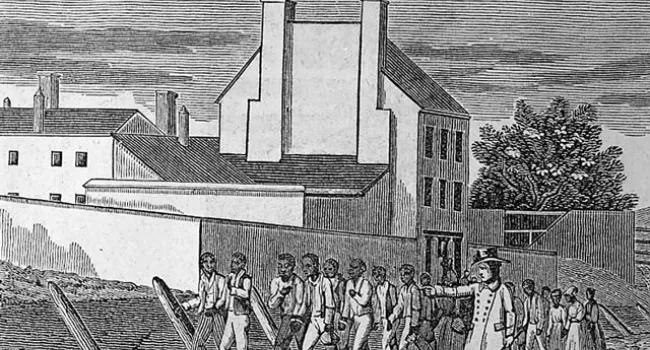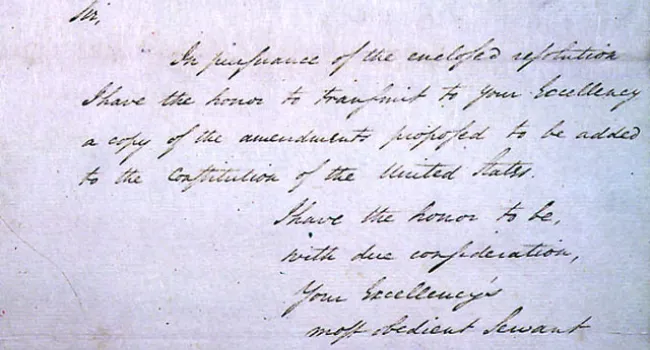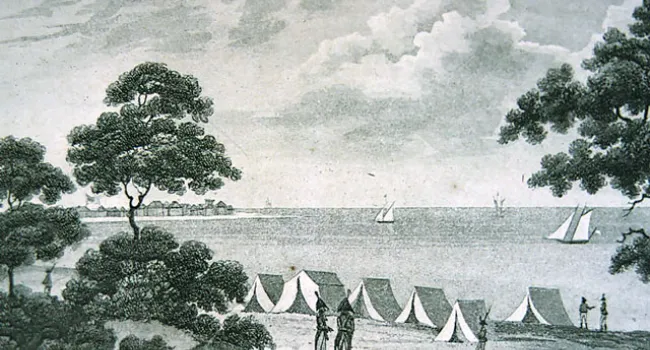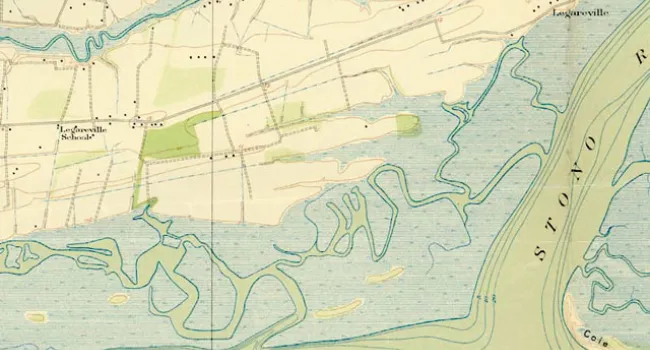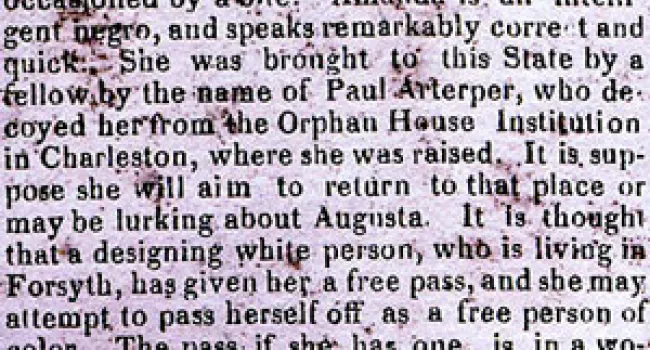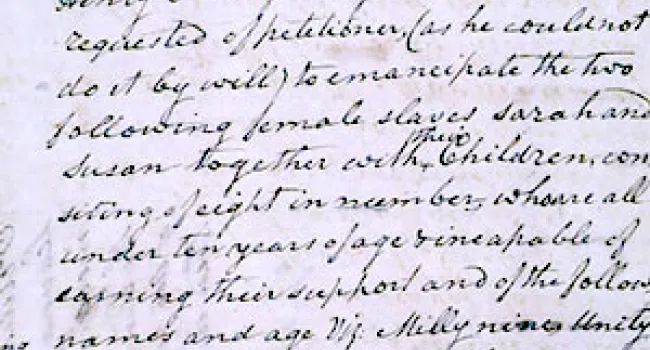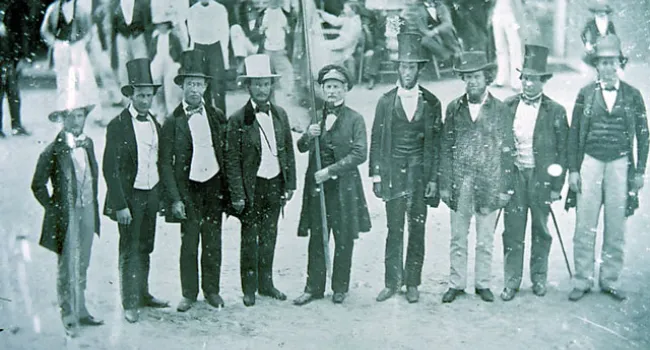
The lands added to the nation through the conquests of the Mexican War raised anew the question of whether or not slavery would be allowed to expand into the new territories of the west. For two years, opposition of many Northerners to expansion of the slave system kept Congress from organizing the newly acquired lands into territorial governments. The gold rush in California forced the issue. California's population rapidly reached 60,000, the number at which they could call a constitutional convention, organize their own government, and petition to be admitted as a state. Their new constitution outlawed slavery. Because California's admission as a free state would have upset the balance of equal numbers of free and slave states in the Senate, the South opposed its admission. The political crisis was finally resolved with the passage of the Compromise of 1850. One of the concessions for the South's approval of admission of California was the promise that a new and strict law returning all fugitive slaves would be passed and enforced. This cartoon, "A Practical Illustration of the Fugitive Slave Law," published in 1851, shows how reluctant Northerners were to enforce the law. The 1854 publication of Harriet Beecher Stowe's book, "Uncle Tom's Cabin," further inflamed Northern opinion against the law.
Courtesy of the Library of Congress.
Standards
- This indicator was developed to encourage inquiry into how land acquisition and the resulting border changes of the U.S. impacted the people of the western territories prior to Westward Expansion.
- This indicator was developed to encourage inquiry into the continuities and changes experienced by Americans of various genders, positions, races, and social status during the Civil War.
- This indicator was designed to encourage inquiry into the continuities and changes of the experiences of marginalized groups such as African Americans, Native Americans and women, as the U.S. expanded westward and grappled with the development of new states.
- This indicator was developed to encourage inquiry into the debates, heightened by Westward Expansion, over federal and state power concerning slavery, and the government’s role in protecting and securing natural rights.
- This indicator was designed to encourage inquiry into the economic implications of the expansion of the rice and cotton industries. This indicator was also developed to promote inquiry into Westward Expansion, the mutually beneficial impact of cotton
- USHC.2.CE Evaluate the causes and consequences of economic and geographic expansion through significant turning points from 1803–1865.

